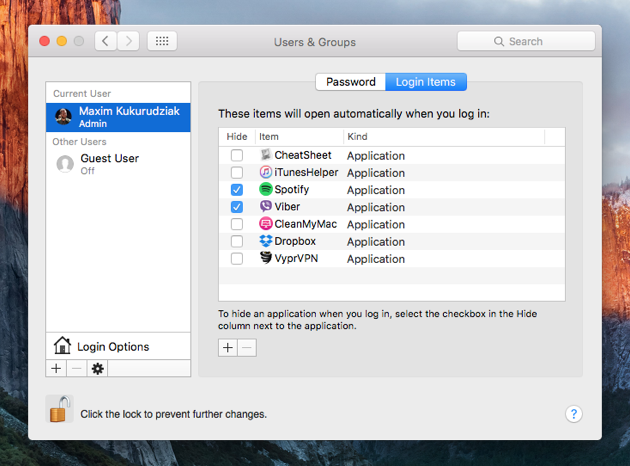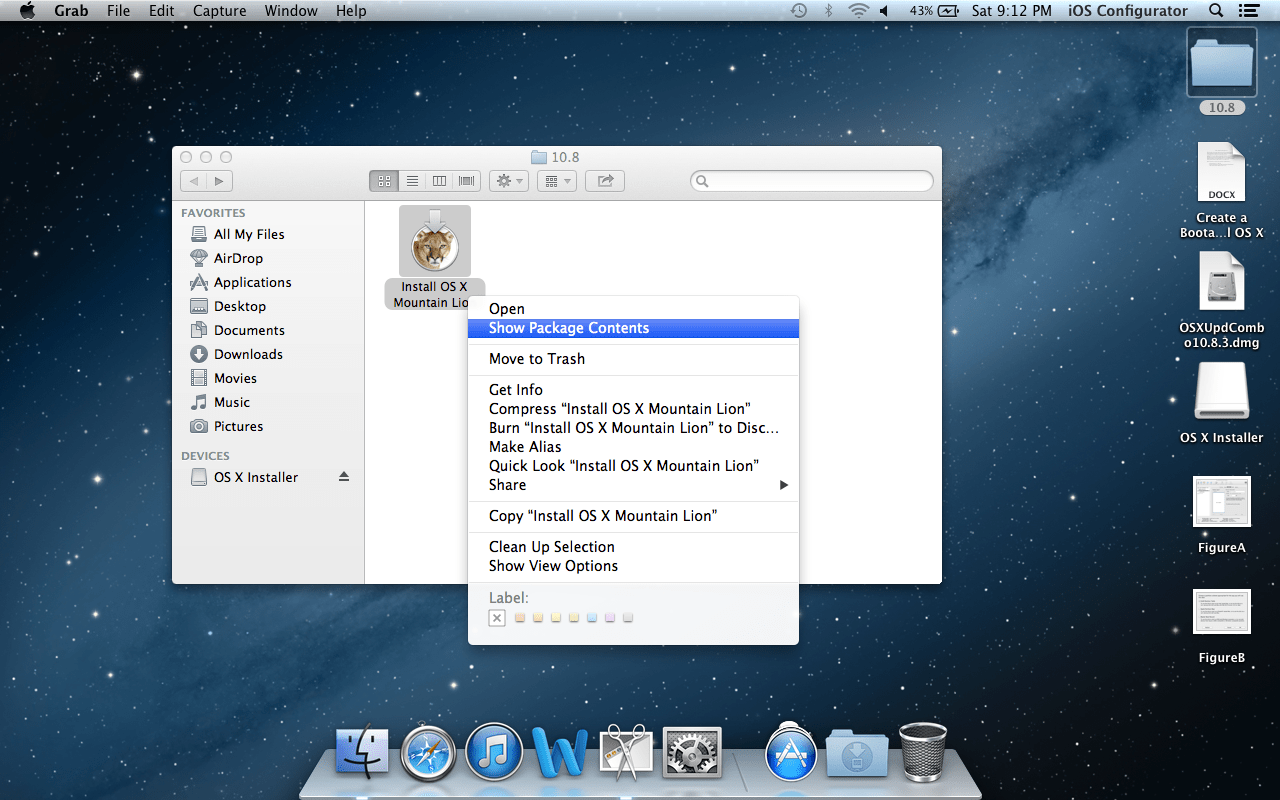- Disk Cleanup For Mac El Capitan Free
- Disk Cleanup For Mac El Capitan Download
- Disk Cleanup For Mac El Capitan Mac
One of the major factors that slows down a computer is the limited disk space. This can be very inconvenient especially when you need your computer the most. Usually, the limited disk space will limit you from performing the major functions of your computer. You can rely on some top strategies in order to clean up your computer. Other than the manual strategies like locating the duplicate files and removing them, you can rely on better strategies. There are several software that have been developed to clean up your Macintosh automatically. Before you choose a disk cleanup software for Mac, you will want to ensure that it works perfectly and delivers the right performance.
OnyX is a multifunction utility that you can use to verify the startup disk and the structure of its system files, to run miscellaneous maintenance and cleaning tasks, to configure parameters in the Finder, Dock, Safari, and some of Apple's applications, to delete caches, to remove certain problematic folders and files, to rebuild various databases and indexes, and more. My MacBook Air is running a 120GB SSD drive so I don’t want my hard drive full of excess things I don’t need. I just noticed after El Capitan that I lost a lot of space. I only had 10GB free. To run well a mac hard disk needs at least 20% free. Here’s how I freed up some more space. I ran Disc Inventory X to see where the excess space was.
Best Disk Cleaner Software for Mac OS X (El Capitan)
Disk Cleanup For Mac El Capitan Free
CleanMyMac 3 is a newer version of the Clean MyMac 2, which was designed to clean up the system on your Mac. It has been developed by the Mac Paw software company and delivers the best services to its users. It will scan your system and get rid of the junk files like the gunk and the kerfuffle that build up as you are using your system. The main focus of this software is to get rid of the developer backup files that are not used.
Mostly, these files will take up more disk space of the system. In the long run, your Mac will work slowly and you will have a limited disk space. This can also restrict you from performing some functions. The Clean MyMac 3 comes with extra features that allow you to maintain your system, carry out the general maintenance, shred files and carry out some online privacy functions. It will also help to get rid of the junk files for the top software in your system. This is a software that you can use to perform all the multiple functions that will help you achieve the best results. Clean MyMac 3 will help you perform more functions and ensure that your disk space is freed up easily.
What is good about Clean MyMac3?- Affordable - The software is very affordable, with regard to the functions that it offers.
- Easy to use - It is quite user-friendly, which also comes with a guide to show you how to use it successfully. Basically, most of the functions perform with a single click.
- Smart Cleanup - Basically, most of the functions perform with a single click.
- All-in-one - Other than the disk cleanup, you can perform more functions with this software. It will only get rid of the junk files while maintaining the useful files.
Step-by-step Guide on How to Clean Mac Disk with CleanMyMac 3
Step 1. Scan Your Mac
Once you have installed the software, you will need to click on 'Scan', which is located on a button at the bottom section of the screen. The software will start scanning the most common areas that have more junk files. When the software has carried out the entire system scan, it will display the available disk space that you can free up for your system. The system will select the files that are not that necessary.
Step 2. Clean Mac
Once the software has selected the areas with higher junk files, you will click on 'Clean'. This will be located at the same spot as the Scan button. Usually, the software will not clean your personal files. It will only get rid of the unwanted files in your system.
Step 3. Freed Space
Confirm file deletion. You will need to confirm if Clean MyMac 3 should get rid of the files that are located in the Large and Old Files section. You can click on the section and select the files that you want to clean. You can select all the files, only when you are sure about getting rid of them. Once the entire cleanup is done, the software will display the amount of space that has been freed.
You probably noticed that after you upgraded to OS X El Capitan, slow Mac started to become a trouble. Why does this happen? Well, we found out that El Capitan needs a lot more disk space and RAM to run quickly. The good news is, it's not just possible to speed up El Capitan — it's pretty simple.
The easiest way to get a faster Mac with El Capitan is to get a Mac cleaner. You can download CleanMyMac X for free and simply let the app do everything for you. Speeding up El Capitan with it will only take a few minutes. But if you want to do it manually, read on.
Go over each step to speed up El Capitan system.

Disk Cleanup For Mac El Capitan Download
1.Speed up your Mac's startup

It starts at the very beginning. When you turn your Mac on, it typically launches a dozen apps at once. And you probably don't need most of them at that moment. This could be one of the reasons El Capitan running slow. To stop them from launching on startup, go to System Preferences, choose Users & Groups and then click your username. Check the unnecessary apps and click.
Don't worry, if you accidentally remove something useful, just add it back by clicking and choosing it from the Applications folder.
2.Major hard drive cleaning
One of the reasons a Mac gets slow is a full hard drive. To find out how cluttered yours is, click on the main Apple menu in the top left corner and choose About This Mac > Storage. If you see the top bar getting full, like in the screenshot below, it's time to clean up some space.
It might take a while, so here's a piece of advice on how to approach it.
- Arrange your files and folders by size to find the biggest.
To do it: open Finder, click on All My Files in the left menu bar (if you don't see it there, press Command+Shift+F (?+?+F), and then click View in the top menu bar and select Show View Options. Now choose Sort by Size and Arrange by Size. Now all your files are arranged from the biggest to the smallest. - Arrange your files and folders by date.
If you'd like to arrange them by date to find files you haven't opened in a while (maybe you forgot they were even there!), you can do this by following the steps above, and then changing arrange by Size, to arrange by Date Last Opened. Now click on Date Last Opened in the name of the column and you get a list starting with the oldest files you have.
Don't forget to look at the file type distribution in the Storage tab. It might give you a hint on the folders that occupy the most space and need cleaning.
This process takes a while because your Mac can't arrange files by both size and date at once. However, there are apps that can, such as CleanMyMac X . It has a special module that looks exactly for large and old files and sorts them for you. You can delete the files you don't need directly from the app in just a few clicks.
3. Trim down your system

Trimming down your system includes cleaning cache and temporary files, and flushing DNS.
Cleaning cache files on El Capitan
- Open a Finder window and select “Go to Folder” in the Go menu, at the top of the screen.
- Type in ~/Library/Caches and hit “enter” to proceed to this folder. Important: remove the insides of these folders, but not the folders themselves.
- Repeat 1 and 2, but replace ~/Library/Caches with /Library/Caches (simply lose the ~ symbol).
- Restart your Mac. Yes, it's kind of a pain.
It's also much easier (and faster) with an app, you can take a look at how to clean caches on Mac OS X.
Flush DNS cache on OS X 10.11
When you flush the DNS cache, what you're doing is removing old cache entries that translate internet domain names (example.com) into IP addresses. You're going to need the Terminal for this. To open Terminal, open Spotlight and type in Terminal, or find it by clicking on the Applications folder and then clicking on Utilities.
Once launched, type in:
sudo dscacheutil -flushcache;sudo killall -HUP mDNSResponder;say cache flushed

You'll need to enter the admin password to execute the command.
4. Free up memory
Disk Cleanup For Mac El Capitan Mac
Usually Macs are pretty handy with memory management, but sometimes you just have to give them a direction. Check out your memory usage in the Activity Monitor (find it with Spotlight) by clicking on the Memory tab.
If Physical Memory and Memory Used have nearly equal values, it means your Mac will start using Virtual Memory soon. Virtual Memory relies on your Mac's hard drive and is so slow that you don't want to get it involved. When you start running out of memory, just clean it manually with Terminal.
Open it as explained in the Step 3. Then, once opened, type in:
sudo purge
Give your system a moment to process the command.
If you don't want to use the Activity Monitor or Terminal commands each time you need to free up some RAM, you can download CleanMyMac X and do it with just one click instead. After downloading CleanMyMac X, freeing up memory is… Well, free.
5. Use CleanMyMac X
You can go over each step to speed up El Capitan, or you can keep it fast with CleanMyMac X.
It will save you hours wasted on painfully boring tasks of searching and deleting useless files. With CleanMyMac X, you can clean your hard drive and system, run maintenance scripts, clear caches and histories, uninstall apps, and remove unused extensions — all from one place.
These might also interest you:
